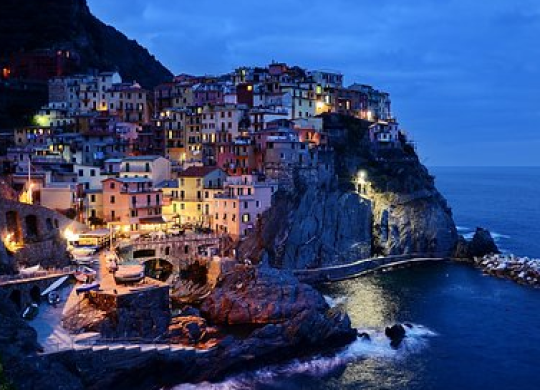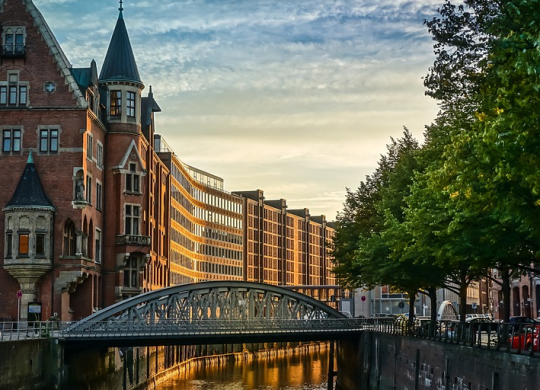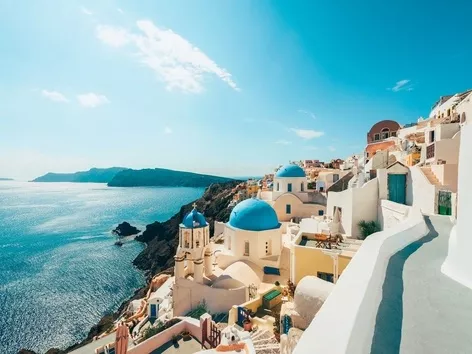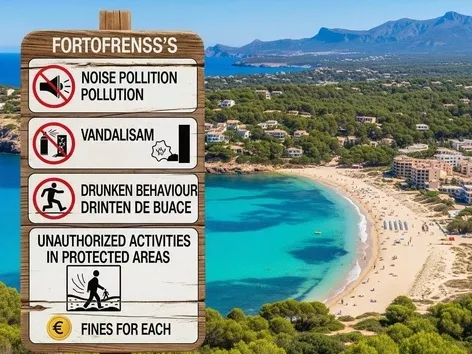Top 20 colorful places in Italy that travelers should definitely visit in 2025
Table of contents
- Naples and Vesuvius - the energy of life on the edge
- Amalfi Coast – Lemons, Rocks and Love
- Cinque Terre – five colorful villages
- Siena – the heart of medieval Tuscany
- The Dolomites - a paradise for travelers
- Abruzzo - wildlife and mountain villages
- Matera - a city in caves
- Venice - a city on the water
- Verona is a legend of love
- Parma and Modena are gastronomic paradise
- Urbino is an open-air museum
- Assisi is a city of silence and spirituality
- Sirmione and Lake Garda
- Alberobello – fabulous trulli houses
- Lecce – a pearl of Baroque
- Aosta – Alpine elegance
- Calabria – Italy without tourists
- Sicily – the pulse of volcano and culture
- Sardinia – turquoise sea and wild beaches
- Tivoli – ancient villas and fountains

Discover 20 of Italy's most colorful destinations - from Cinque Terre and Amalfi to Sicily and Sardinia. Unique cities, beaches, gastronomy, culture and unforgettable landscapes - ideas for traveling to Italy in 2025
Italy is a country that knows how to surprise at every turn. It can be noisy, passionate, calm, fabulous or wild - depending on where you go. That is why millions of travelers from different parts of the world visit this fabulous place every year, including citizens of Madagascar, Togo, Israel and Moldova. In addition, the Italian province hides many treasures, no less impressive than the famous Rome or Florence.
We have prepared a selection of 20 bright, atmospheric and diverse places in Italy, which will give a real emotional immersion in the spirit of this amazing country.
Choose a reliable health insurance policy from Visit World to travel abroad safely.
Naples and Vesuvius - the energy of life on the edge
Ancient streets, pizza "Margherita", noisy markets, espresso on the go - Naples is impossible to forget. And above the city rises the volcano Vesuvius, a symbol of the power and beauty of nature.
Amalfi Coast – Lemons, Rocks and Love
Positano, Amalfi, Ravello – villages that seem to have come out of postcards. Bright facades, turquoise sea, winding roads and terraces dotted with lemons. One of the most romantic corners of Europe.
Cinque Terre – five colorful villages
Monterosso, Vernazza, Corniglia, Manarola, Riomaggiore – each village is unique. Walking between them is a real pleasure for those who appreciate views, wine and leisurely evenings.
Siena – the heart of medieval Tuscany
A brick city with the famous Palio horse race, Gothic cathedrals and atmospheric narrow streets. Everything here breathes history and Tuscan charm.
The Dolomites - a paradise for travelers
The majestic mountains in northern Italy are an ideal place for hiking, skiing and solitude. They are especially picturesque at sunset, when the rocks turn pink.
Abruzzo - wildlife and mountain villages
A little-known but charming region with national parks, wolves, bears and ancient villages, where life flows slowly, as in past centuries.
Matera - a city in caves
Sassi di Matera - stone houses hollowed out of the rock. In the evening, the city is illuminated by thousands of lights and turns into a fairy-tale scenery.
Venice - a city on the water
A city of canals, bridges and masks. But the real Venice is revealed in the silence of morning alleys and in unexpected courtyards, where tourists do not reach.
Verona is a legend of love
The city of Romeo and Juliet with its charming architecture, ancient amphitheater and wine-growing hills around.
Parma and Modena are gastronomic paradise
People come here for real parmesan, prosciutto, balsamic vinegar and pasta. Gastrotourism here is like a pilgrimage.
Urbino is an open-air museum
The Renaissance city of the artist Raphael with palaces, a panorama of the hills and workshops where frescoes and mosaics are still created.
Assisi is a city of silence and spirituality
The birthplace of St. Francis. Narrow streets, a white basilica, olive groves - everything creates an atmosphere of peace and tranquility.
Sirmione and Lake Garda
An incredibly photogenic place: a castle right on the water, thermal springs, the cleanest lake and vineyards around. Very romantic.
Alberobello – fabulous trulli houses
A unique settlement with white cone-shaped huts. Inside – cafes, souvenir shops and local housing. A real architectural wonder.
Lecce – a pearl of Baroque
Lush architecture, narrow streets, basilicas and the warmth of the southern sun. Lecce is also called the “Florence of the South” – and it is absolutely deserved.
Aosta – Alpine elegance
A city surrounded by mountains, with a magical atmosphere, mountain castles, fondue and wine. Ideal for a quiet winter holiday.
Calabria – Italy without tourists
Clear sea, mountains, ancient ruins and cuisine that combines Arab, Italian and Greek flavors. Everything here is authentic, inexpensive and sincere.
Sicily – the pulse of volcano and culture
Palermo, Etna, Taormina, ancient temples, Arab markets, almond sweets and an incredible diversity of cultures. The island is like a separate country.
Sardinia – turquoise sea and wild beaches
One of the most beautiful islands in the Mediterranean. Clean beaches, quiet bays, pastoral villages and sheep. Even the Italian elite rests here.
Tivoli – ancient villas and fountains
Only 30 km from Rome – and a completely different rhythm. Villa d’Este with fountains, Hadrian’s Villa – a rest for the eyes and soul.
Italy is more than just a travel destination. It is a country of sensations, a country of emotions that changes with every turn of the road. Here, each region, each town has its own mood, rhythm and taste. And perhaps the best thing about traveling in Italy is the opportunity to find something unexpectedly close to you. After all, the true beauty of Italy is in the details, encounters and moments that remain in the heart for a long time.
Italy is best discovered slowly, without rushing. Choose a few places from this list - and allow yourself a real journey: with tastes, conversations, views and unexpected discoveries.
When planning a trip abroad, be sure to take care of a travel insurance policy that will protect you from unforeseen situations during your trip and compensate for unplanned expenses - for medical treatment, in case of lost luggage, flight cancellation, etc.
Buy a reliable travel insurance policy from trusted insurance agents on the Visit World portal!
Reminder! Feeling tired, but don't have time for a long vacation? We've already told you how micro-vacations for 2–4 days help you quickly recharge, where to go, how to plan and save without sacrificing the quality of your vacation.
Products from Visit World for a comfortable trip:
Travel guide for 200 countries;
Legal advice from a local specialist on visa and migration issues;
Travel insurance around the world (please select the country of interest and citizenship to receive services);
Medical insurance all over the world.
We monitor the accuracy and relevance of our information, so if you notice any errors or inconsistencies, please contact our hotline.
Frequantly
asked questions
What is the best time to travel to Italy?
Which places in Italy should I choose if I'm traveling for the first time?
What is the best way to travel around Italy - by car or train?
Recommended articles
2 min
Travels
Travel to Germany in 2025: Entry Rules, Visa Processing & Top Tourist Attractions
Planning a trip to Germany in 2025? Learn about current entry regulations, visa types, top tourist destinations, useful travel tips, and important safety tips. This guide will help you prepare for your trip and make it as comfortable and safe as possible
01 Jun. 2025
More details2 min
Travels
Top 10 Most Unique Festivals in the World to Visit in 2025
Discover the TOP 10 most unique festivals in the world in 2025: from colorful Holi to the ice palaces of Harbin. Dates, tips, countries, interesting facts - everything you need for an unforgettable trip
25 May. 2025
More details1 min
Travels
Where to Go on Vacation in June 2025: Top 8 Best Destinations Around the World
June is the perfect month to travel. In this roundup, we've rounded up the 8 best destinations to visit in June 2025, from Santorini and Bali to Vancouver and Iceland. Find out where to go for the best weather, fewer crowds and exciting events
01 Jun. 2025
More details2 min
Travels
Fines and Jail Time for Tourists in Mallorca in 2025: What You Must Know Before You Travel
Mallorca remains one of the top holiday destinations in Europe, attracting millions of tourists each year for its beaches, nightlife and Mediterranean charm. But while enjoying the island, tourists should be aware of the local laws, as new fines and penalties introduced in 2025 are quite high. Find out what could land you a hefty fine or even a prison sentence on the island
10 Jun. 2025
More detailsAll materials and articles are owned by VisitWorld.Today and are protected by international intellectual property regulations. When using materials, approval from VisitWorld.Today is required.
